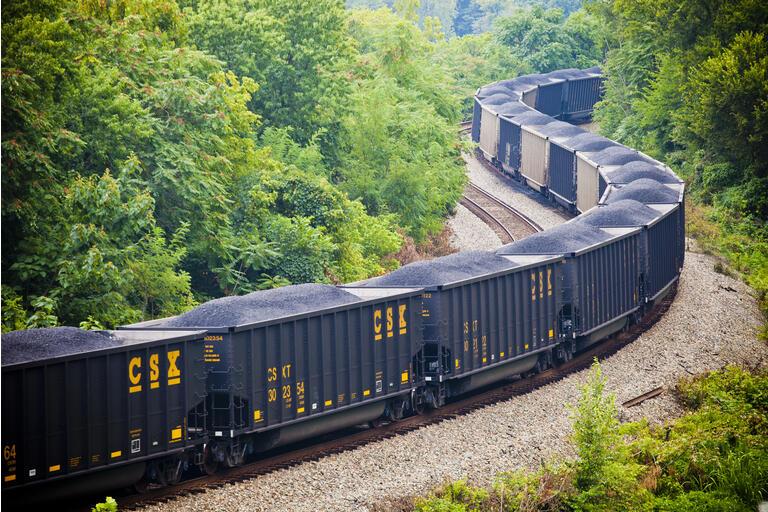Introduction
It's earnings season, which means we get to dive into some very interesting earnings releases. In this case, I will cover the Florida-based CSX Corporation. (CSX), which I have frequently recommended in recent years - most recently on October 6 when I urged investors to buy into weakness. While I always (try to) cover the quarterly earnings of CSX, we have a very good reason to take a closer look this time as we're in a very interesting business environment, which I will explain in this article. It is, therefore, not a given that the company reported blowout revenue and EPS numbers. The company effectively navigated through supply chain issues and managed its expenses conservatively. This and ongoing macro tailwinds boosted the stock to a new all-time high. The only bad news is that this rally caused the company's dividend yield to drop further, which is not helping the valuation. Now, let's look at the details!
Here's What Happened In 3Q21
Some might have noticed that I started writing fewer articles in the past two weeks. That's the result of a changing workload and new projects I'm working on. It's unlikely to change, it even may get worse. Nonetheless, I'm not bailing. I will continue to focus on companies that I like, and I believe will deliver long-term value to shareholders - and my followers. CSX Corp. is one of these companies.
I am a huge believer in rail investments because the current North American Class I railroads are fantastic cash flow machines. They are the backbone of the (global) economy and are able to protect investors against inflation through fuel surcharges and above-inflation price hikes.
Now more than ever, we're seeing that railroads need to actively manage ongoing difficulties. While we should technically speaking be in an easy market because of rebounding demand, we find ourselves in a supply chain crisis with rapidly rising inflation. Supply chains are hurt because of a truck driver shortage, which prevents ports and related operations from running smoothly. We now have hundreds of thousands of containers waiting to enter major ports like the one in Long Beach, California. We're also dealing with a major chip shortage, which is preventing car and machinery producers from producing the numbers they would like to produce - I am sure that every reader has been impacted by this one way or another.
As a result, total shipments volume was up just 3% in the third quarter - compared to a recession quarter last year. The company saw a 2% contraction in merchandise due to lower agriculture shipments and an implosion in automotive - for the aforementioned reasons. Coal was up due to international demand as countries (especially emerging markets) are accelerating coal imports due to expensive natural gas and oil prices. Intermodal was up 4%, which is a very satisfying result given the circumstances. In this case, the company is using 13 overflow container yards to create additional storage and capacity. Even if the truck shortage prohibits operations from running smoothly, congestion won't be a huge issue. In addition to that, the company is implementing a number of other measures to streamline struggling operations, including investing in technology and creating additional drayage solutions to maintain terminal fluidity.

Source: CSX 3Q21 Financial Overview
Overall, the company's operations were good. 88% of all intermodal was on time, which is a very good performance in this environment. 68% of carloads were on time.
The best news here is that the price/mix was a huge tailwind. The company reported 24% higher revenue with strong growth in coal, metals, minerals, and chemicals. Even intermodal reported 14% higher revenue.
When looking at costs, we see a total surge in expenses of 23% to $1.9 billion. Please keep in mind that this includes $200 million related to Quality Carriers, which the company bought this year. Other than that, the company's fuel bill was up roughly 100%, depreciation was higher, and labor costs were up from $574 million to $631 million.
Source: CSX 3Q21 Earnings Presentation
Anyway, as the revenue growth rate was higher than the expense growth rate and because revenue in $ is higher than expenses in $, we're seeing strong growth in operating income of 26%. Additionally, it means that the operating ratio improved. In this case, the company lowered its operating ratio to 56.4%, which is truly spectacular.
When incorporating buybacks, which caused the 200 basis points difference between net earnings growth and earnings per share growth, we get 34% GAAP EPS growth to $0.43. That's significantly higher than expected as the Seeking Alpha overview below shows.
Source: Seeking Alpha
With that said, and to return to one of the key reasons why I like railroads: the company generated a load of cash. In the first three quarters of this year, free cash flow came in at $2.9 billion. That's up from $1.9 billion in the prior-year period. Moreover, operating cash flow (free cash flow including capital expenditures) came in at 102% of net income, which indicates quality earnings. Even last year, this ratio was at 97%.
Yet, the company's cash balance fell from $3.2 billion on December 31, 2020, to $2.2 billion as of September 30, 2021. The result is a huge increase in dividends and buybacks. In 3Q21, the company distributed $1.3 billion to shareholders. $208 million of this came from dividends. This total is up from just $247 million (including buybacks) in 3Q20, which shows that as soon as confidence in economic growth rebounds, CSX starts to reward its shareholders.
Source: CSX 3Q21 Earnings Presentation
Valuation
We're dealing with higher expectations compared to my prior article. We're now looking at up to $3.8 billion in free cash flow next year with expected EBITDA exceeding $7.2 billion for the first time ever. First of all, we're dealing with $12.0 billion in expected 2022 net debt. That's less than 1.7x expected 2022 EBITDA. In other words, it leaves room to further boost buybacks and dividends.
Source: TIKR.com (Includes 2021/2022 expectations)
Using a $78.2 billion market cap and $3.8 billion in free cash flow, we're dealing with a 4.9% free cash flow yield. Given the historic free cash flow yield range (graph below), investors are not overpaying for free cash flow. Using the market cap again and $12.0 billion in expected net debt, we get an enterprise value of roughly $90 billion. That's 12.5x expected 2022 EBITDA. This is not cheap, but it's a fair value. The 1.0% dividend yield is low and a reason for people to ignore the stock. However, this is not unusual as the stock has yielded close to 1% since the 2016 rally in industrials.
Takeaway
My opinion is unchanged. CSX is a tremendous dividend growth stock for investors looking for industrial/cyclical exposure. The company has a very low operating ratio and is dealing very well with ongoing supply chain difficulties. If anything, the company is currently proving how well it operates by generating rapidly rising free cash flow used to boost shareholder distributions.
The only problem is that the company's yield is low. That's the only reason why I haven't bought besides the fact that I'm already massively overweight railroad stocks.
The valuation is fair, but not cheap.
My advice is rather simple. If you are a long-term dividend (growth) investor, keep buying the stock on weakness (>10% corrections). That's when I add significant exposure to my existing trades. If you are not long yet, you can obviously wait until a correction occurs, but it's safer to buy now and keep adding on a long-term basis. Especially if you expect to hold for decades, there's no need to wait for the perfect entry - mainly because I think the CSX rally has more upside.
(Dis)agree? Let me know in the comments!









